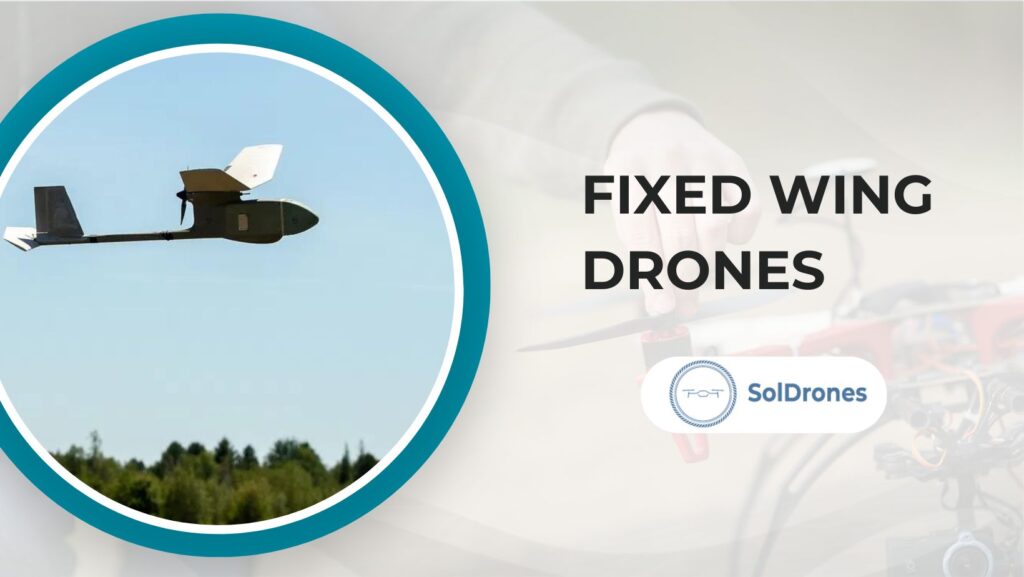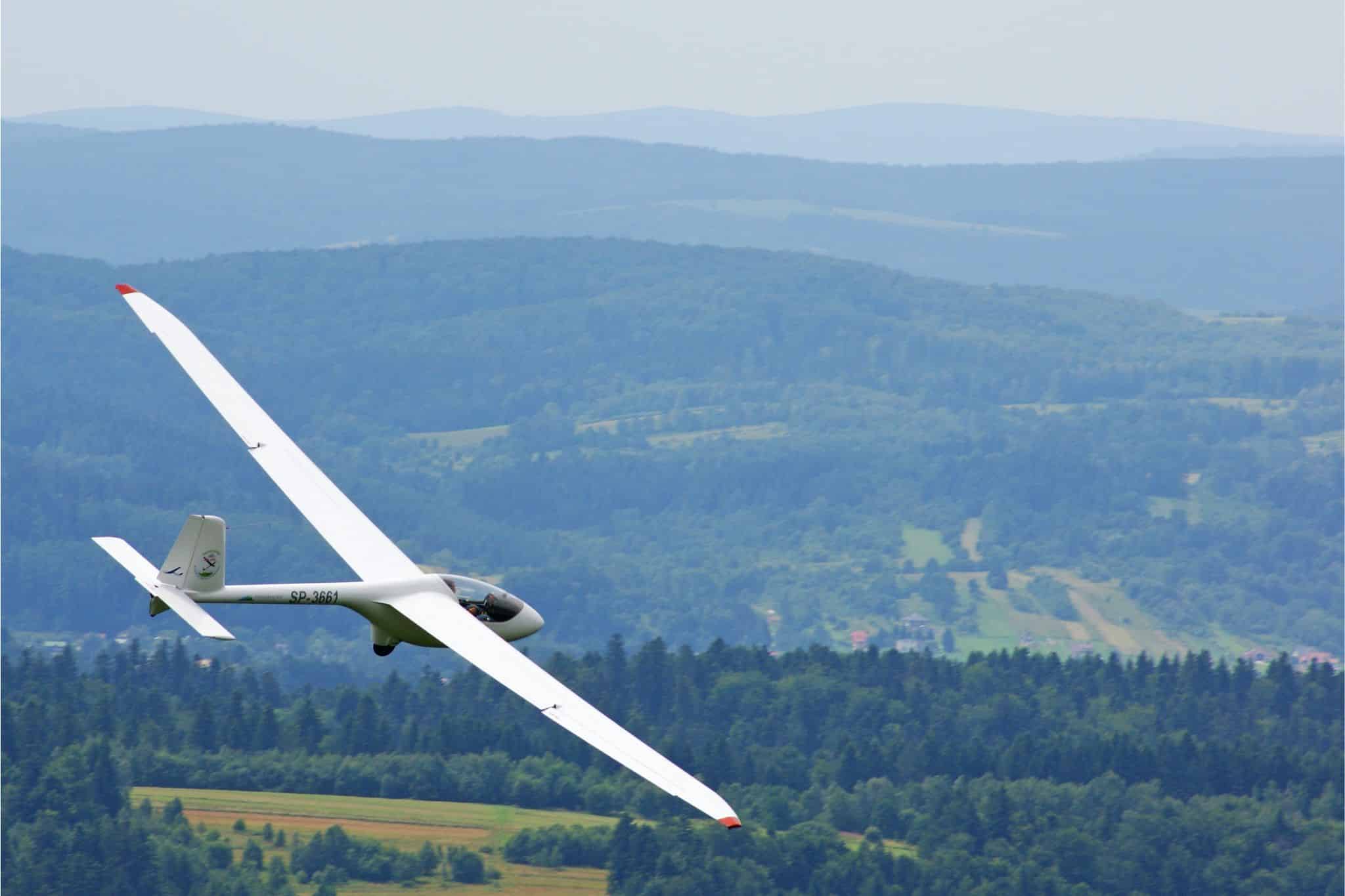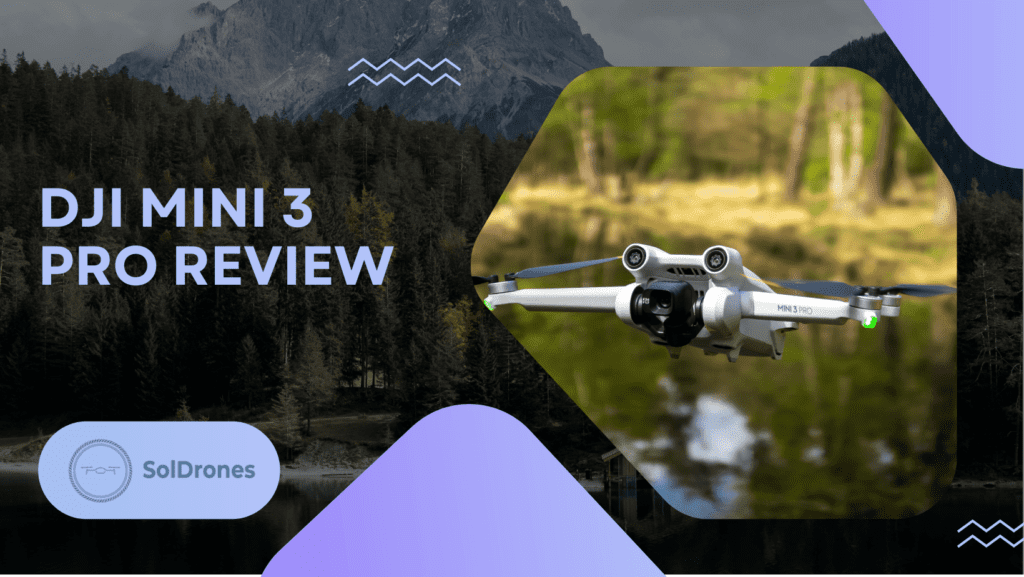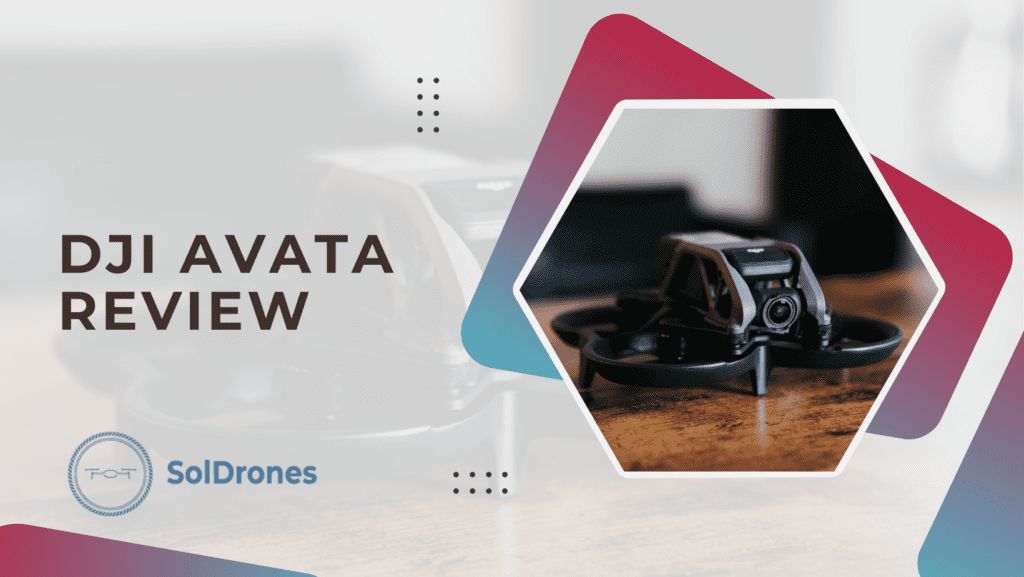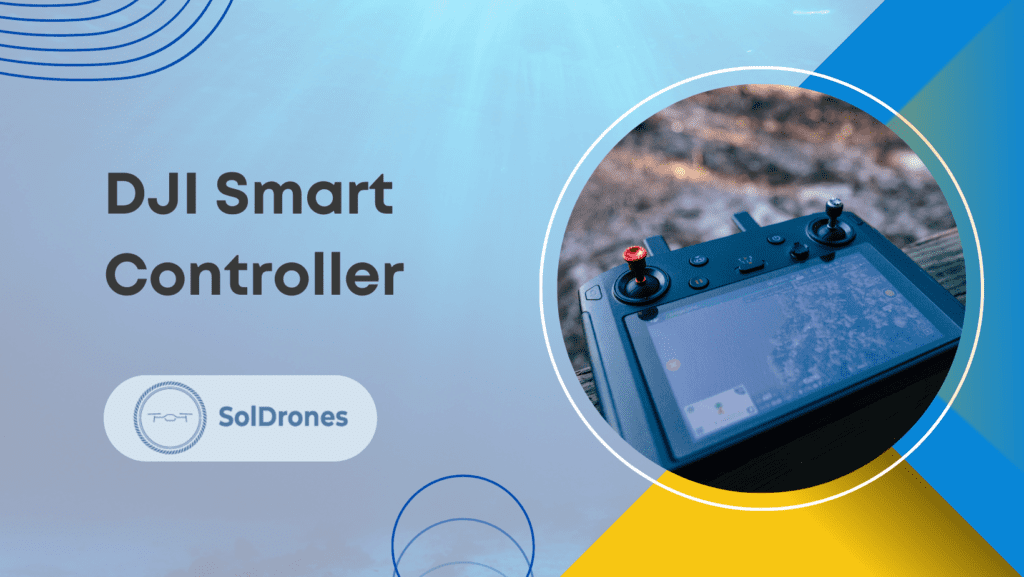Drones are vital for businesses of many industries around the globe. Though many drones exist, not all are right for every task.
In large, hard settings, like mapping or surveillance, choosing the correct drone matters. This is where fixed-wing drones stand out.
They’re made to deal with rough spots, stay stable, and move long distances easily. For pros looking for a reliable and high-quality drone, fixed-wing models are often the top pick.
In this guide, we’ll cover everything you need to know about fixed-wing drones, including their unique qualities, pros, cons, components, and build quality.
What is a Fixed-Wing Drone?
A fixed-wing drone looks and flies much like a small plane but without a pilot. Its wings don’t move – they’re always in one place.
Unlike drones with moving propellers, these use their wings to stay up in the air, similar to how real planes fly. This design helps them use less power, so they can fly longer. That means you can take more videos at once.
Looking to get a starter fixed wing drone, just to play around?
- FPV/HD Camera Ready: Fun to fly and FPV/HD camera ready with up to 3 mounting stations.
- SAFE Select Protection: Available SAFE Select flight envelope protection for safer flying.
- Easy Transport: Plug-in wing and winglet sections for easy transport and storage.
- Advanced Receiver: Spektrum AR631 6-channel AS3X receiver with SAFE Select technology.
Most drones with fixed wings need help to start flying. You may have to toss them or use a launch pad. Yet, the straight-wing VTOL (Vertical Take-Off and Landing) drone can lift up and come down straight, making it simple to use anywhere.
How Does a Fixed-Wing UAV Fly?
Fixed-wing drones glide in the air with help from their wings. As they move forward, air flows over and under the wings, making them lift. This lift keeps the drone in the air and lets it travel far using less battery power.
How Fixed Wing Drones Maneuver?
Flying isn’t just moving forward – it also means going different ways. Fixed-wing drones do this by three main actions: roll, pitch, and yaw.
- Roll – Makes the wings go right or left and helps the drone tip when it turns.
- Tilt – Moves the front up or down, making the drone go up or drop.
- Yaw – Turns the front to the left or right, making it go left or right.
These actions rely on 3 control surfaces:
- Ailerons – Set on wings, they control the tilt.
- Rudder – Located at the back, it guides side-to-side turn.
- Elevators – Set on the back, they steer the pitch.
With these steering parts working as one, fixed-wing drones move through the air with ease and precision.
What Makes A Fixed Wing Drone Better?
Fixed-wing drones do better in some jobs than multi rotor drones. Here’s why:
- Stability – Fixed-wing drones, like small planes, are more steady, even in rough air. This steady flight is key for long-term mapping and surveillance.
- Safe Landing – When these drones lose power, unlike the ones with multirotors that can drop fast, they can glide gently to the ground – minimizing the chance of breaking.
- Longer Flights – With their aerodynamic design, fixed-wing drones can stay up much longer, often up to 90 minutes. On the other hand, drones with multiple rotors generally only last about 30 minutes.
- Higher Altitude – Fixed-wing drones can fly higher – beyond 110 meters. This lets them see and map big places more easily.
- Minimal Noise – Fixed-wing drones are also quieter than drones with many rotors, making them better for jobs where you need to be quiet and not bother animals or people.
Picking the right drone depends on what you need, but these benefits show why many experts like fixed-wing drones for tough and big jobs.
How is a Fixed Wing Drone Used?
Fixed-wing drones are handy for lots of jobs because they fly up high and fast, covering big areas. Here are some usual uses:
- People race with fixed-wing drones while wearing head-view screens. This lets them see what the drone sees, making races more thrilling.
- These drones are good for the military because they can go far and fly high. They are often used for surveillance and mapping large areas.
- Fixed-wing drones can carry and drop packages, making them useful for sending goods between ships or to close countries.
- In farming, fixed-wing drones make quick work of covering big crop areas with spray.
- They also fly out health help to hard-to-get spots, giving needed aid fast.
- These drones can drop seeds over wide lands, aiding in growing new trees.
- Fire crews use drones to see and follow large fires, getting live views to help quench the flames quickly.
Fixed-wing drones are great for large jobs and long hauls. They can handle many big tasks well. Top brands have the right drones for the jobs listed before.
For those who love to fly for fun, take photos from the sky, and make videos, brands like Parrot FPV Disco, DJI’s fixed-wing line, and Hubsan H301S Spy Hawk are top picks. They are easy to use and are a perfect start for anyone new to drones with wings.
For work and big job uses, like roof inspection, mapping, and farming – the Sensefly eBee X is a great choice. It has better tools, can carry more, and flies longer, making it perfect for tough tasks.
In this video by Coptrz, you’ll easily see the difference between fixed-wing drones and multi-rotor drones.
Video Credit: Coptrz
Different Sizes of Fixed Wing Drones
Drones with firm wings come in many shapes and sizes, each suited for diverse tasks based on their flight range, load, and flight time.
They serve various roles, proving useful for both hobbyists and professionals.
Large Fixed-Wing Drones
Large winged drones can fly far and carry a lot. The MyTwinDream 1.8m UAV for example, is made of foam and has two motors. It runs on a 14.8v Lithium Polymer (Li-Po) battery. This lets it fly for up to 1.5 hours and cover as much as 62 miles using a 7″ propeller pitch.
These drones can carry a lot. With strong engines, they can lift up to 20 pounds. But, when loaded, they might only go 20 miles. A good thing is you can throw this drone to get it flying, so you don’t need a lot of space. This way, you can take off and land in secret.
It’s good at moving heavy things far, keeping an eye out for hours, and even secret jobs like sneaking goods or safe drop-offs. This drone costs roughly $2,200, making it a solid balance between its performance and cost.
Medium Fixed-Wing Drones
Medium drones like the Volantex are popular since they can fly long, cover a lot of ground, and hold a good load.
- FPV Ready: Fully designed for FPV like the larger Ranger EX.
- Quick Assembly: Quick, easy assembly with no glue required.
- Powerful Motor: Features a powerful brushless out-runner motor.
- High Payload: Special airfoil design for higher payload capacity.
Volantex is known for being strong and bendy.
Small Fixed-Wing Drones
Small fixed-wing drones are famous for flying long and far. But, they can’t hold much because their wings are small. A well-known small drone is the Strix Nano Goblin.
The Strix Nano Goblin can fly for around 50 minutes and reach up to 80 miles. Even though it can’t hold a lot, it’s still handy for specific tasks. It can speed over 100 mph when it dives, making it fit for quick jobs where it strikes fast and strong.
This drone costs around $500, making it quite cheap. With its blend of speed, range, and flight time, it suits many needs, from play to some work jobs.
Key Components of Fixed-Wing Drones and Their Functions
To understand how fixed-wing drones work, it’s important to know about the parts that help them fly.
In this section, we’ll look at the main components that make these drones move and stay in the air.
1. Propellers
Propellers are key for flying fixed wings. They are the spinning parts that push the drone ahead by making air pressure unequal around them. This uneven pressure moves the drone through the air.
The propellers change the motor’s spin into push that moves the drone forward. How fast a drone flies and how long it stays up depends on the propeller’s size, angle, and how many blades it has.
2. Motor
The motor is another key part of fixed-wing drones. It powers the propellers, changing electric energy from the battery into motion to spin the propellers.
Picking the right motor determines how strong your drone will be and its flying ability. There are two main kinds of motors: brushed and brushless. Brushless motors work better and last longer.
Also, the motor’s kV number, that tells how fast it spins per volt and how well it uses power, matters a lot for how the drone flies.
3. ESC (Electronic Speed Controller)
The Electric Speed Control, or ESC, sits between the control board and the engine, deciding how fast the engine spins and its path. It shifts the flow of power to make sure the engine follows flight control’s orders.
This makes the drone fly smooth and right on track. A bonus is that ESCs help with using energy efficiently, letting the drone use its battery for a longer time by managing power smartly.
4. Flight Controller (FC)
The flight control is key for a fixed-wing drone. It uses sensors, gyroscopes, and accelerometers to watch the drone’s place and move. By working on this data, the flight control keeps the drone stable and follows the pilot’s commands.
This part allows for smooth and even flight. It also helps with smart flight ways and flying on its own, making it crucial for both manual and automated flying.
5. Radio Transmitter
The radio remote is a tiny tool the pilot uses to control the drone. With it, the drone can move up or down, go left or right, and speed up or slow down.
The remote sends radio waves to the drone, which the drone catches. This lets the pilot guide the drone in the air.
When choosing a radio remote, it’s key to look at how far it can send waves, how strong these waves are, and how many channels it has for doing different things.
6. Radio Receiver
The radio picks up signals from the pilot’s remote. These signals go to the flight control, which makes the drone do what the pilot wants.
A good radio receiver is key for smooth control and safe flying, especially when the drone is far or in tough spots.
The receiver ensures the pilot can guide the drone well, keeping it on course and reacting fast to any shifts.
7. Battery
The battery is the key power source for drones with fixed wings. It powers the motor, flying parts, and all tech stuff. Choosing a strong battery affects the drone’s flight time, its load, and how it flies.
Most drones come with Lithium Polymer (LiPo) batteries. They’re small, light, and pack a lot of power.
8. Payload
A drone’s extra load is the gear or tools it can haul for specific tasks. This might be a camera for taking pictures from the air, a LiDAR setup for drawing maps, or unique sensors for farming.
How much weight a drone can lift depends on its design, motor strength, and its flight style. It’s important to get the load right because it affects how steady and smooth the drone flies with more stuff on it.
9. Frame and Shell
The frame is like the bones – it holds everything tight and keeps the drone steady. Builders often use light stuff like carbon fiber or tough plastics to make the drone light and easy to fly.
The shell, or the drone’s outer skin, not only guards all the inside parts but also makes the drone move smooth through the air.
10. GPS Technology
GPS helps drones know their position and tracking them. With GPS, the one leading the flight can plot a route for the drone to follow. It also helps the drone find its way back home and keeps it in safe and legal fly zones.
GPS is super useful for drones that fly with fixed wings because they roam over big areas. The exact spot data from GPS is needed for tasks like checking land, mapping, and other work where knowing the precise place matters.
Key Factors to Consider When Choosing a Fixed Wing Drone
Picking the right fixed-wing drone can be tough with so many choices out there. Here’s what to think about when choosing one:
1. Flight Range and Endurance
To make your drone work well and last long in the air, it needs a good flight range and endurance.
Drones that go the distance can see more ground without breaks. This is key for those who take aerial photos, check land, or mapping. The longer your drone can hover, the more data you can collect at once.
Look for a drone with wings that can go at least 10 kilometers and stay up for more than an hour to do your work best.
2. Payload Capacity and Versatility
The load a fixed-wing drone can hold is key for its use in many areas. It shows how much gear, like cameras or sensors, it can take without messing up its flight. Picking a drone with the right load capacity means it can do many kinds of jobs.
For most work, aim for drones that can carry 1 to 5 kilograms (2.2 to 11 lbs). This range makes it easy to fit the tools you need and still keep the drone flying well and smooth.
3. Fixed Wing Frame and Shell Materials
Strong materials like carbon fiber or composites make the frame tough, so it can handle crashes and bad weather. An aerodynamic shape helps the drone fly more smoothly and use less power.
For the best results, pick drones with carbon fiber or composite frames and designs that cut through the air efficiently. This ensures your drone remains reliable and efficient over time.
4. Autonomous Features
Search for drones that have a GPS path guide, follow-you setting, and go-back-home options.
These aids make planning your flight simple and add safety. Picking drones with good self-flying skills makes trips smoother and safer and can greatly boost how well your tasks do.
Pros and Cons of Fixed Wing Drone
Pros
- Fixed-wing drones last in the air much longer than others – great for long tasks or big places.
- They’re simple to pilot and conserve energy – so they move fast and with less waste.
- They can carry more load, such as top tech cameras and gear.
- They fly smoothly – top for capturing calm photos and clips from above.
- They can cover big areas in one go – handy for many jobs.
Cons
- To use these drones, you need a track or a special thrower. To land them safe, you could use a runway, a chute, or a net.
- Fixed-wing drones can’t lift up, drop down, or hang in one spot. This means they’re not good for tight spots or tasks that require this capability.
- Flying these drones can be challenging – you need lots of learning and practice to fly them.
- They tend to be pricier, mainly if they pack the best gadgets and can travel long distances.
FAQs
Are Fixed Wing Drones More Efficient?
Yes, fixed-wing drones do better for long-distance flights. Their plane shape lets them soar, using less power to hang in the air than four-blade drones.
How Long Can Fixed Wing Drones Fly?
Flight times for fixed-wing drones can vary a lot. Small ones often fly for 1 to 2 hours, while big models can be in the air for 4 to 6 hours or even more. Things like how big they are, how much battery they have, and how they’re made can affect how long they can fly.
How Much Does a Fixed Wing Drone Cost?
Low-cost winged drones start at $200 and go up to $1,000. They are well-suited for beginners. On the other hand, high-end professional drones range from $50,000 to more than $200,000. These pricey drones come with the best tools, fly longer, and have high-resolution cameras for work use.
How Much Does a Fixed Wing UAV Weight?
The heaviness of a fixed-wing drone depends on its build and use. Tiny drones weigh less, making them simple to carry and use. Bigger drones weigh more but can do more complex jobs and carry bigger loads.
- Small UAVs – 2 to 5 kilograms (4.4 to 11 pounds)
- Medium-sized UAVs – 5 to 25 kilograms (11 to 55 pounds)
- Large UAVs – 25 to 150 kilograms (55 to 330 pounds)
Are Fixed Wing Drones Suitable for Beginners?
While fixed-wing drones can be harder to fly than multirotor drones, they are still good for beginners. Starting with a smaller, entry-level fixed-wing drone and getting proper training can help new pilots learn quickly and fly confidently.
The Takeaway
Fixed-wing drones are handy for many jobs, from mapping projects to high-altitude surveillance to long-range missions and advanced agricultural surveys. They are good at covering big spaces well because they can soar using fixed wings instead of spinning parts. This means they can fly longer and more steadily, making them a top choice for extensive and precise operations.
If you think of starting a business with these drones, you can explore work in mapping land, watching the environment, or making media. SolDrones can guide you into this exciting world. With expert tips and help, you can make your interest in fixed-wing drones into a successful business.

